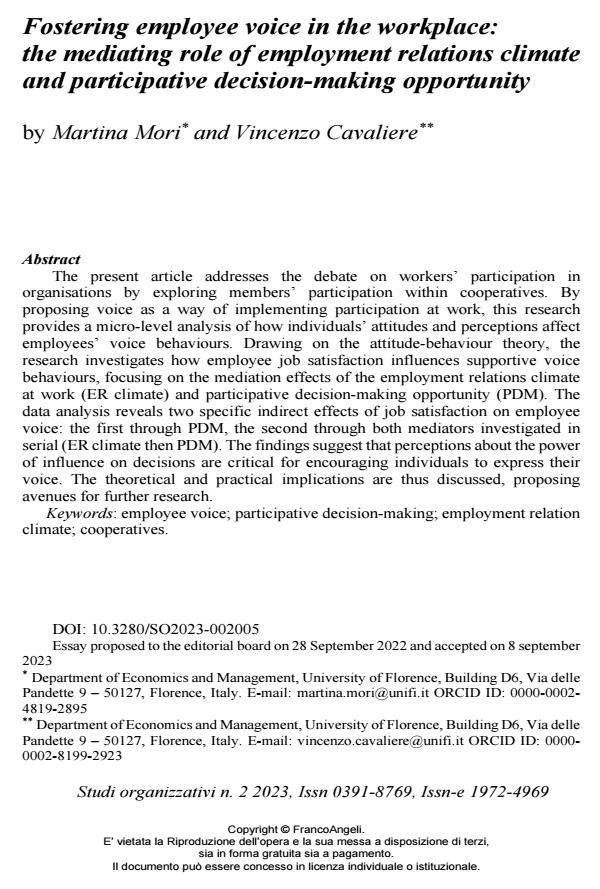Fostering employee voice in the workplace: the mediating role of employment relations climate and participative decision-making opportunity
Journal title STUDI ORGANIZZATIVI
Author/s Martina Mori, Vincenzo Cavaliere
Publishing Year 2024 Issue 2023/2
Language English Pages 32 P. 105-136 File size 361 KB
DOI 10.3280/SO2023-002005
DOI is like a bar code for intellectual property: to have more infomation
click here
Below, you can see the article first page
If you want to buy this article in PDF format, you can do it, following the instructions to buy download credits

FrancoAngeli is member of Publishers International Linking Association, Inc (PILA), a not-for-profit association which run the CrossRef service enabling links to and from online scholarly content.
The present article addresses the debate on workers’ participation in organisations by exploring members’ participation within cooperatives. By proposing voice as a way of implementing participation at work, this research provides a micro-level analysis of how individuals’ attitudes and perceptions affect employees’ voice behaviours. Drawing on the attitude-behaviour theory, the research investigates how employee job satisfaction influences supportive voice behaviours, focusing on the mediation effects of the employment relations climate at work (ER climate) and participative decision-making opportunity (PDM). The data analysis reveals two specific indirect effects of job satisfaction on employee voice: the first through PDM, the second through both mediators investigated in serial (ER climate then PDM). The findings suggest that perceptions about the power of influence on decisions are critical for encouraging individuals to express their voice. The theoretical and practical implications are thus discussed, proposing avenues for further research.
Keywords: employee voice; participative decision-making; employment relation climate; cooperatives.
Martina Mori, Vincenzo Cavaliere, Fostering employee voice in the workplace: the mediating role of employment relations climate and participative decision-making opportunity in "STUDI ORGANIZZATIVI " 2/2023, pp 105-136, DOI: 10.3280/SO2023-002005